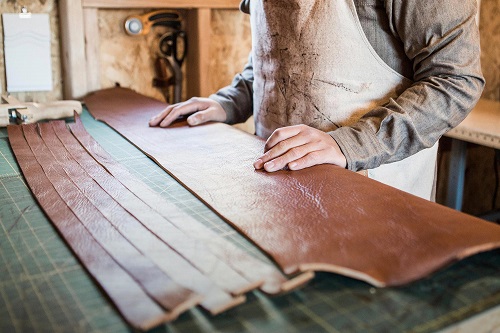24 September 2021
People who buy leather products want to feel assured that their choice of materials and products is the right one; sustainable for people and planet alike. Increasing social consciousness and environmental activism are placing the ancient art of leather making under scrutiny. Are the animals from which the hide is used treated well? Are the people who produce the leather treated fairly? And are the tanners and manufacturers doing everything with the environment in mind? Report by One 4 Leather.

The European leather industry is actually at the forefront of the conversation and innovation towards lower impact and circular practices. It’s closely involved in advancing legislation, safe and healthy practices, and strives for traceability and guarantees of high standards in animal welfare.
Leather making: the inception of waste management
Leather is considered a luxury material, yet not a single animal is raised for its hide. There’s no economic sense to it as all leather is produced from meat industry by-products. Historically, it’s always been this way and leather precedes the concept of recycling (and to this day leather is recycled itself). The hides are there, easily available. Even if everyone would stop eating meat today, the global pile of hides still available would constitute an overwhelming amount of waste. If not for leather making, it would all go into landfills or get incinerated and be replaced with plastics.
To be clear, according to the FAO (2016), we are talking about 6,5 billion kilograms of bovine hides. And we can add about 0,8 billion kilograms of sheep and goatskins to this pile. ‘A lot’ would be an understatement.
Unlikely champions of animal welfare…………to read the rest of this article, click on Leather under Environmental Scrutiny
我们为皮革、物料及时装业界创造面对面洽谈的机会,为客户缔造实质商机。我们云集世界各地的商家,让他们寻找新的合作伙伴,发掘潜在客户或供应商,并掌握业界最新发展。
我们主办多个专注时尚及生活潮流的商贸展览会, 为这不断变化的行业,提供最全面的买家及参展商服务,方便他们了解急速转变的行业环境,并预测来季趋势。

使用条款 | 隐私政策 | APLF 可持续发展